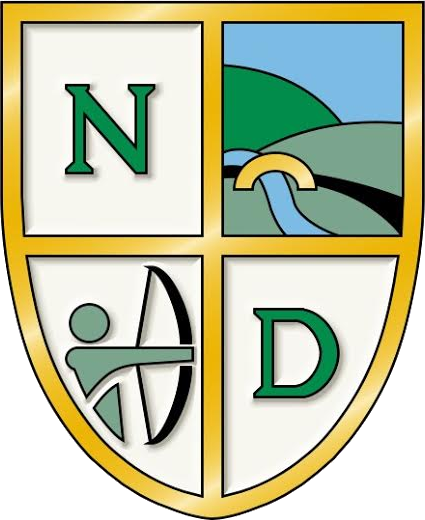For those who have not shot at our club before, or for those who want to know what to expect on a typical meet, this is the general structure of one of our club shoots. For answers to more specific questions, try our Frequently Asked Questions page.
Arrival and Setup
People start to arrive at our range (see Location & Times) from about 9:30 on a Sunday. We have the use of the Matchpoint Lifeline car park, and there is a general milling around and socialising while people arrive. The number of people shooting depends a lot upon the time of year, and the weather, but is usually in the order of 15-20 archers, of a wide range in skill levels. When a keyholder arrives, the container is unlocked and we start to unload the equipment.
Everybody pitches in with helping to set up the range. Safety notices are placed at all points where people may enter the range, shooting lines are set up and bosses are loaded with the appropriate target faces for the round being shot. The bosses are then taken, with their stands, into the field to be set up at the correct distances from the shooting line.
The round being shot has been suggested in advance (see Current Rounds), but it could change on the day depending upon the weather and the desires of those attending. Some people may just want to practice at a particular distance rather than to participate in the scheduled, scored, round.
When the range has been set up, people assemble their own equipment – usually in the car park – before signing in and bringing their equipment to the range area. After any presentations of badges, awards etc, the Field Captain for the day – usually the Tournaments Officer – will explain the round being shot, and check that there is an even spread of archers amongst the target bosses. There are usually between 4 and 6 archers shooting at any one target, and they will organise themselves into a Group A and Group B set.
Shooting
When everyone is ready – usually about 10am – the Field Captain will blow the whistle to indicate shooting can start. Group A archers will shoot three of their six sighter arrows (not scored), then Group B archers will step up and shoot their first 3, then Group A shoot their last three sighters, followed by Group B. When all groups on every target have shot their single end of (usually six) sighters, the Field Captain will blow their whistle three times to show that shooting has stopped, and the archers will go and collect their arrows (and, if not a sighting end, will score them).
Any arrows that miss the target will be found at this point, with everyone helping to find them! As the range is on a field shared with other sports, we can only use metal (aluminium) or composite (aluminium and carbon) arrows, though wooden arrows with metal tips are also allowed. Pure carbon arrows are not allowed on shared fields, in accordance with Archery GB rules, as it is essential that every lost arrow is found. The club has the use of metal detectors to find lost arrows, and there is no shame in needing to use one of these! They are regularly grabbed after each end to find over-, or under-shot arrows.
This continues until the completion of the round being shot, when the Field Captain will indicate the last end of the round. If it was a short round, they will generally ask if anyone wants to continue shooting and if multiple people want to continue, this can be accommodated. On a typical day shooting will end at about midday. Score sheets are collected and are passed on to the Records Officer to check and process the scores.
Packing Up
Everyone then helps to pack up the range equipment and load it back into the container before taking down their own equipment and heading home.
Etiquette and Safety
We are a sociable and informal club and the shooting is quite relaxed. However, we do encourage archers to be aware of, and to follow, the North Downs Archery Club Range Etiquette & Safety rules.
Safety is of utmost importance at the club and everybody shooting is responsible for both their own safety and the safety of others. We shoot on an open field and the process for immediately pausing the shoot if someone (or somebody’s dog!) enters the range area is explained in detail during the beginners’ course, and for any newcomers to the club.

